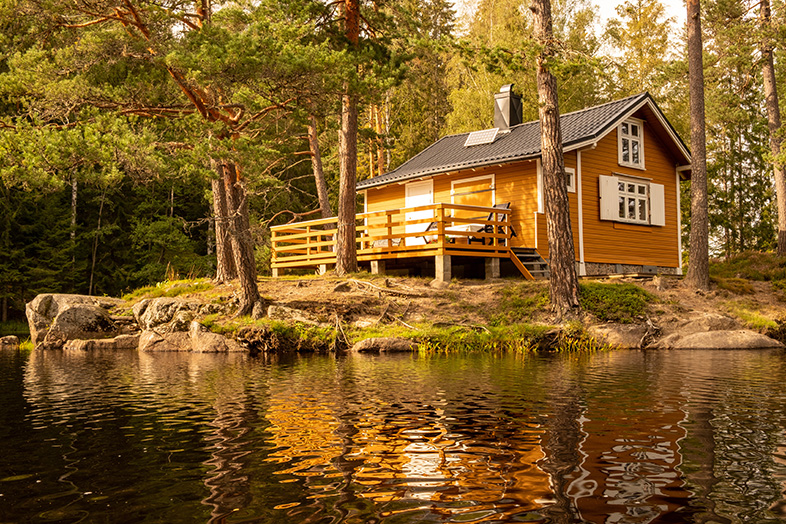
Disputes about Wisconsin cabins happen all the time. But recently, one dispute has stood out from the rest. It has gone all the way to the United States Supreme Court, and a decision is expected in late 2016. What happened, and how did this dispute go all the way to the highest court in the land?
UPDATE: Arguments were heard by the Supreme Court in March of 2017, and a ruling should be issued later this year.
The Situation
Years ago, a Wisconsin family with a cabin on the St. Croix wanted to sell off an extra side lot to finance cabin improvements. The county said the lot was too small to sell as a "developable parcel" due to state and federal guidelines governing property on scenic waterways such as the St. Croix. Since then, the family and various authorities have been locked in an ongoing battle that involves a delicate balancing act between personal use of property, and preservation of the environment and scenic areas of national importance.
A Gift From Their Parents
The family involved in this case is a set of seven siblings who were gifted two parcels of land by their parents in the early 1990s. One of the parcels houses the family cabin; the other is a side lot that the parents had bought as an investment. After the land was deeded over to the children, the entire family continued to use it in the same way they had since the parents originally acquired the land in the 1960s.
The Plan To Sell Quickly Falls Apart
In 2004, the siblings decided to try to sell the adjacent parcel in order to raise funds to make improvements to the cabin. When they went to market the property, they found out there was an issue. A 1970s Department of Natural Resources regulation (coupled with parts of the National Wild and Scenic Rivers Act), imposed strict rules about developing land that close to the St. Croix River.
Specifically, the regulations state that there must be at least one acre of developable space on a parcel in order to build. While the lot the siblings wanted to sell is 1.25 acres, rules for wetland preservation and other related regulations meant that only .5 acres of that parcel could be developed. With only .5 acres of developable space, no development would be allowed. This significantly impacts the value of the parcel.
The family sued, alleging that the government's regulations were essentially a "taking" (also known as a use of its eminent domain power), meaning the family lost value without compensation.
Balancing Interests, And Looking At Other Solutions
The family's interests and the family's ability to use/sell their property is not the only issue that must be considered in cases such as this. Due to the importance that local, state and federal authorities have given to the preservation of scenic waterways and other protected parts of the environment, the long-established rules governing development near the river need to be taken into account.
The government countered the family's lawsuit by noting that the family could have taken advantage of grandfathering provisions in the law, which provided a loophole in the law and allowed development on only .5 acres, but the parents had not deeded the land in a way that this was possible. Essentially, the government claimed that the family had a chance to split/sell the land how they wanted, but they had passed up that chance by not being more careful with how the land was deeded over from their parents.
Additionally, the county claimed that the family could have modified the improvement plan (which the county referred to as "grandiose") in a way that would have complied with the regulations that protect such scenic areas, but they chose to sue instead of modifying their plan.
Complexity Along Every Step Of The Way
So far, the process has gone on for more than a decade, and required the family to:
- File an initial lawsuit, which they lost.
- Pursue an appeal of the first decision at the Wisconsin Court of Appeals. They also lost here.
- Petition the Wisconsin Supreme Court to hear their case. This petition was denied and the highest court in Wisconsin refused to hear their claim.
- File a federal claim with the United States Supreme Court. It was a long shot that their case would be heard at all, but the Supreme Court decided to hear the case.
While not all real estate disputes are this complex, this highlights just how many rules, regulations and governing bodies can quickly become involved in a property dispute.
Even The Best Laid Plans Can Lead To Property Litigation
A different approach to the real estate transfer could have avoided the current issues altogether. When the lots were gifted to the children, the deeds could have been drawn up in such a way that different parties (albeit in the same family) would own each lot. This would have protected the ability to grandfather the lots in, as the grandfathering provisions require land to be held by different owners or else the parcels are effectively "merged" and the grandfathering provisions do not apply.
Had that type of planning taken place, the family would be able to develop the vacant parcel with little issue. However, that planning didn't happen on the front end, and now significant litigation is the result.
This type of situation is all-too-common in Wisconsin, especially when cabins and other family properties are involved. When planning is not done correctly, or when someone transfers or obtains property without knowing all of the rules and regulations that a piece of real estate is subject to, large-scale issues arise.